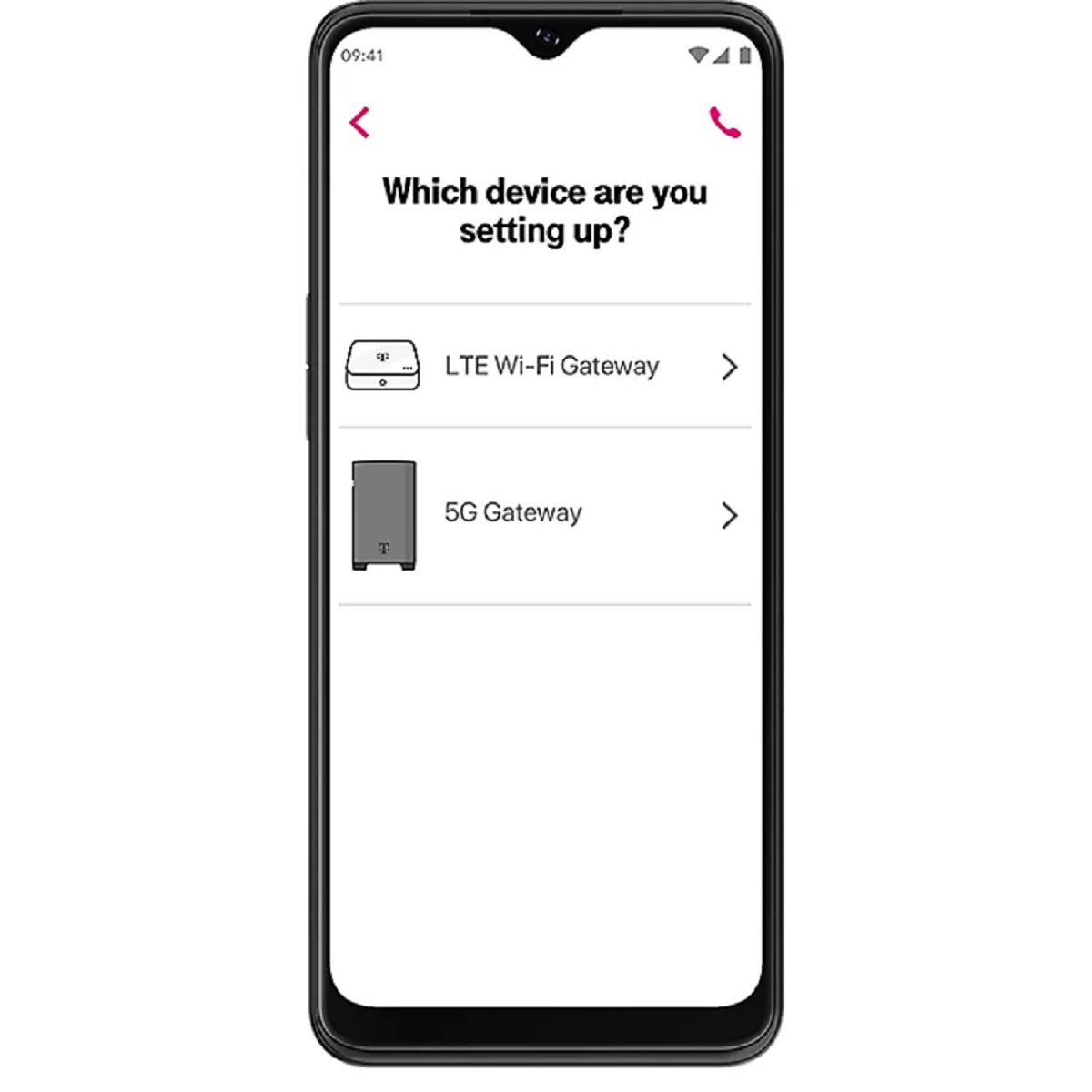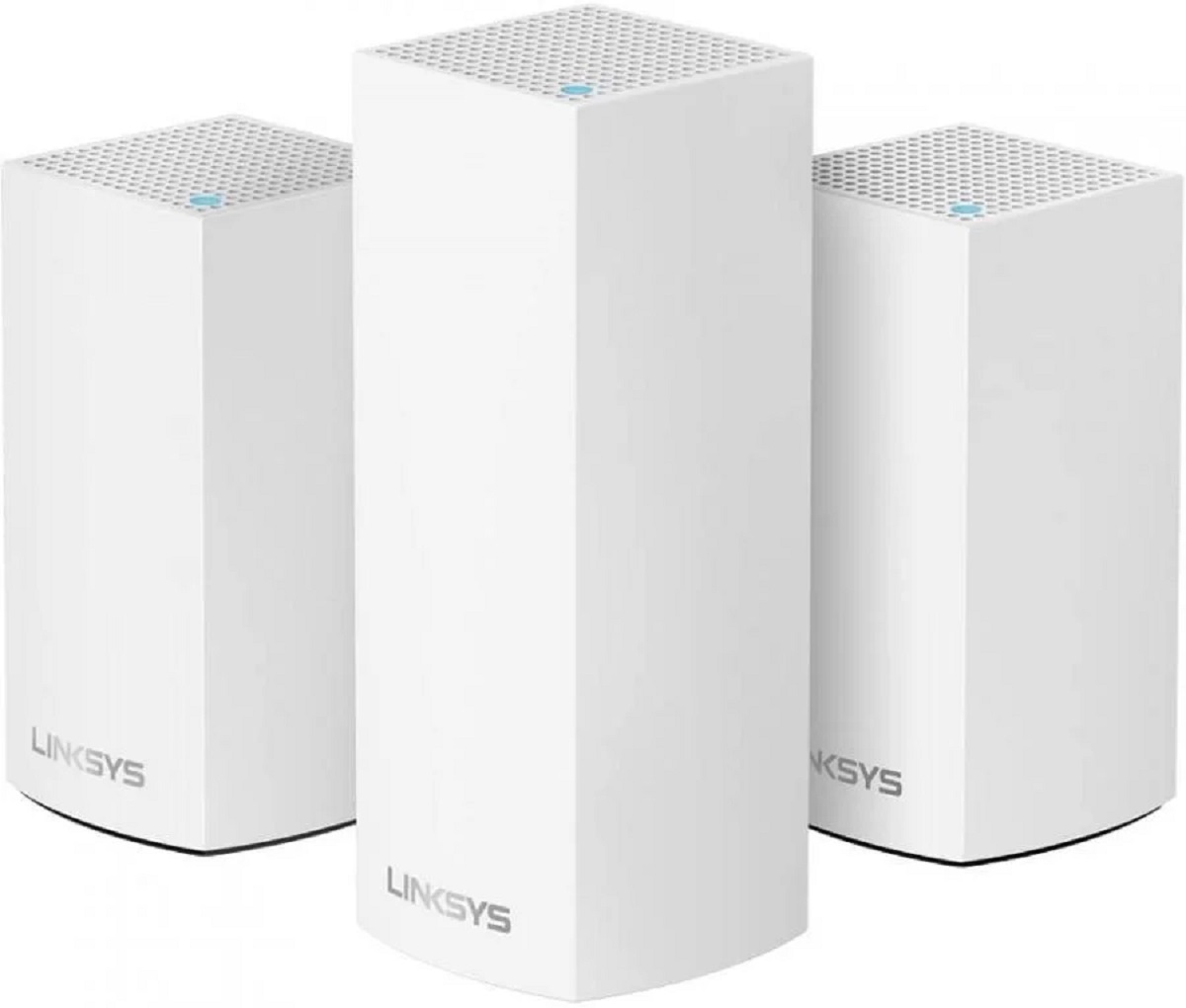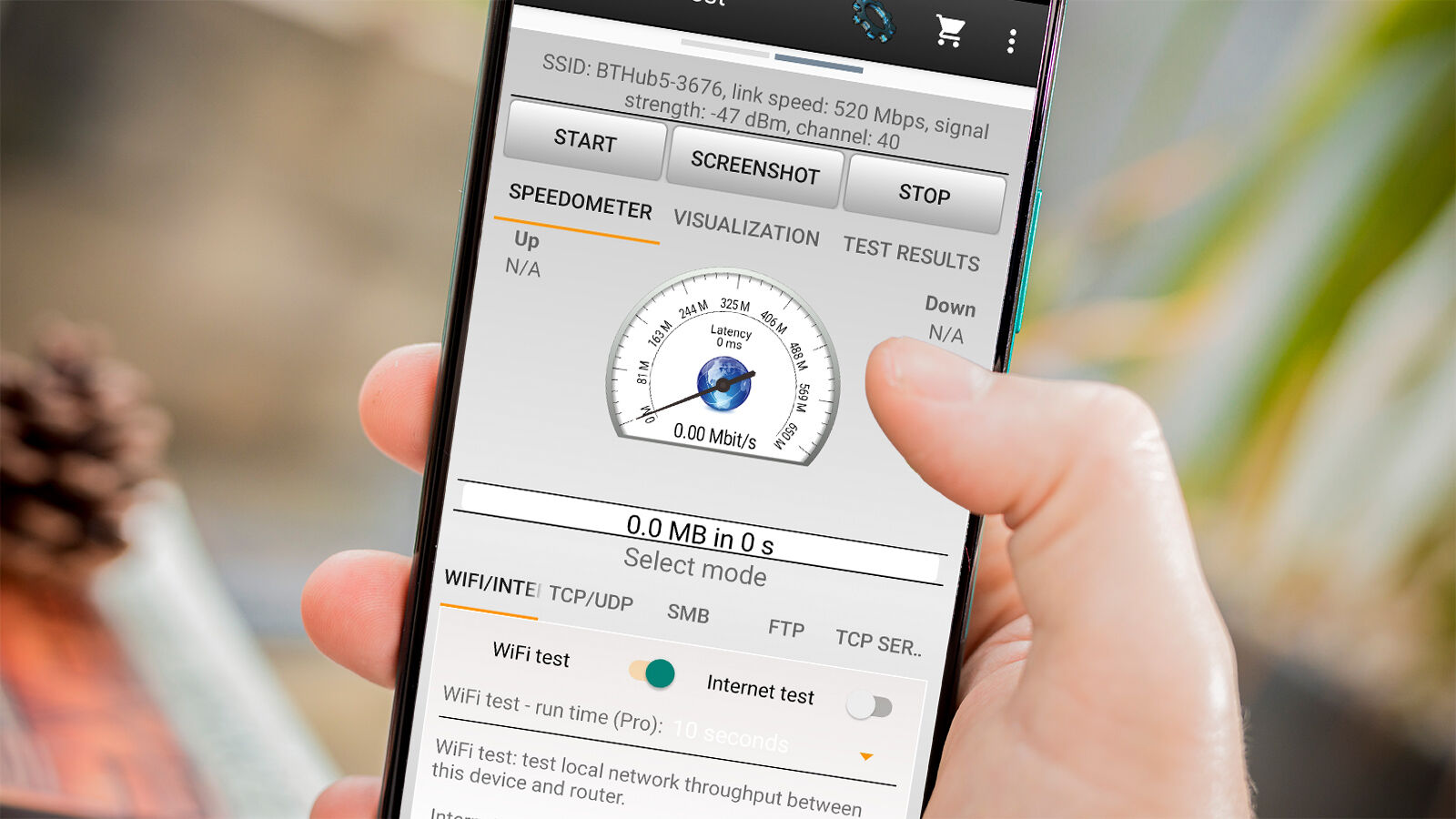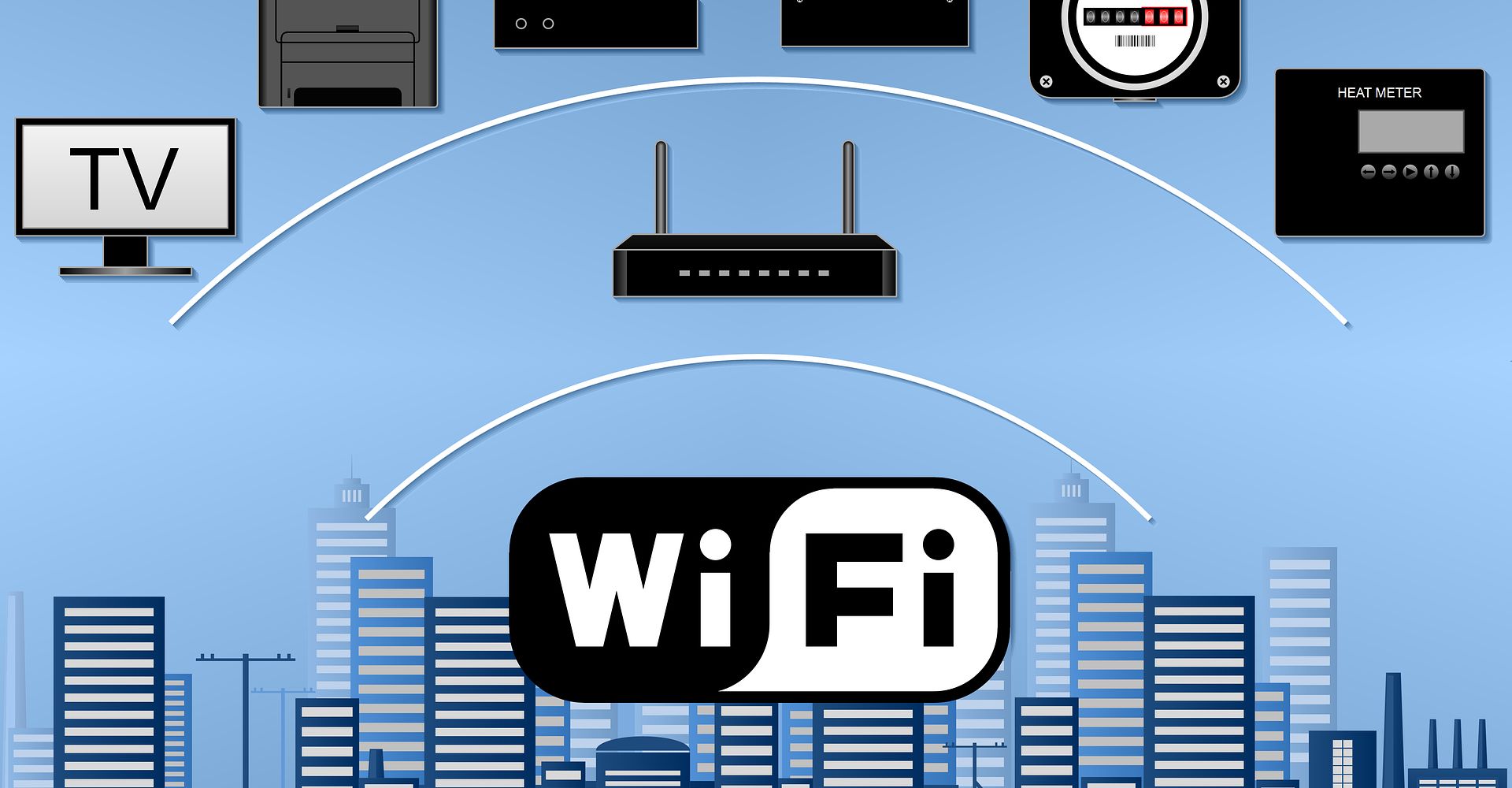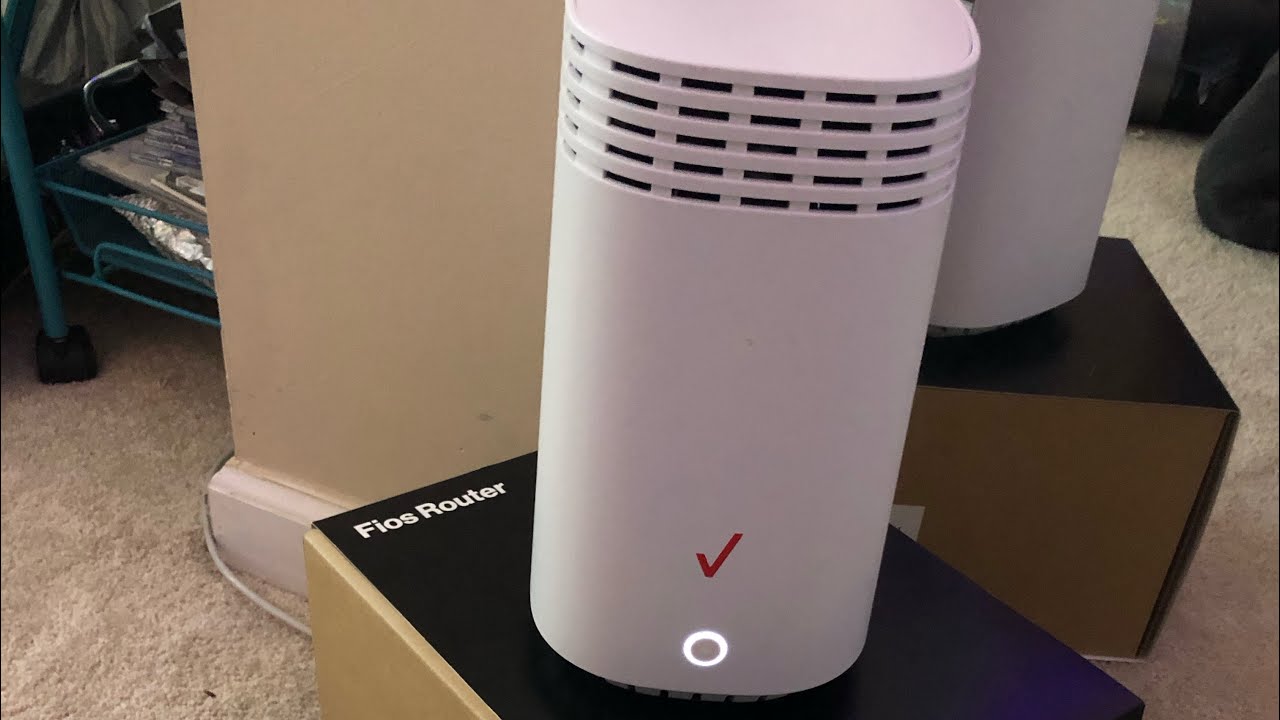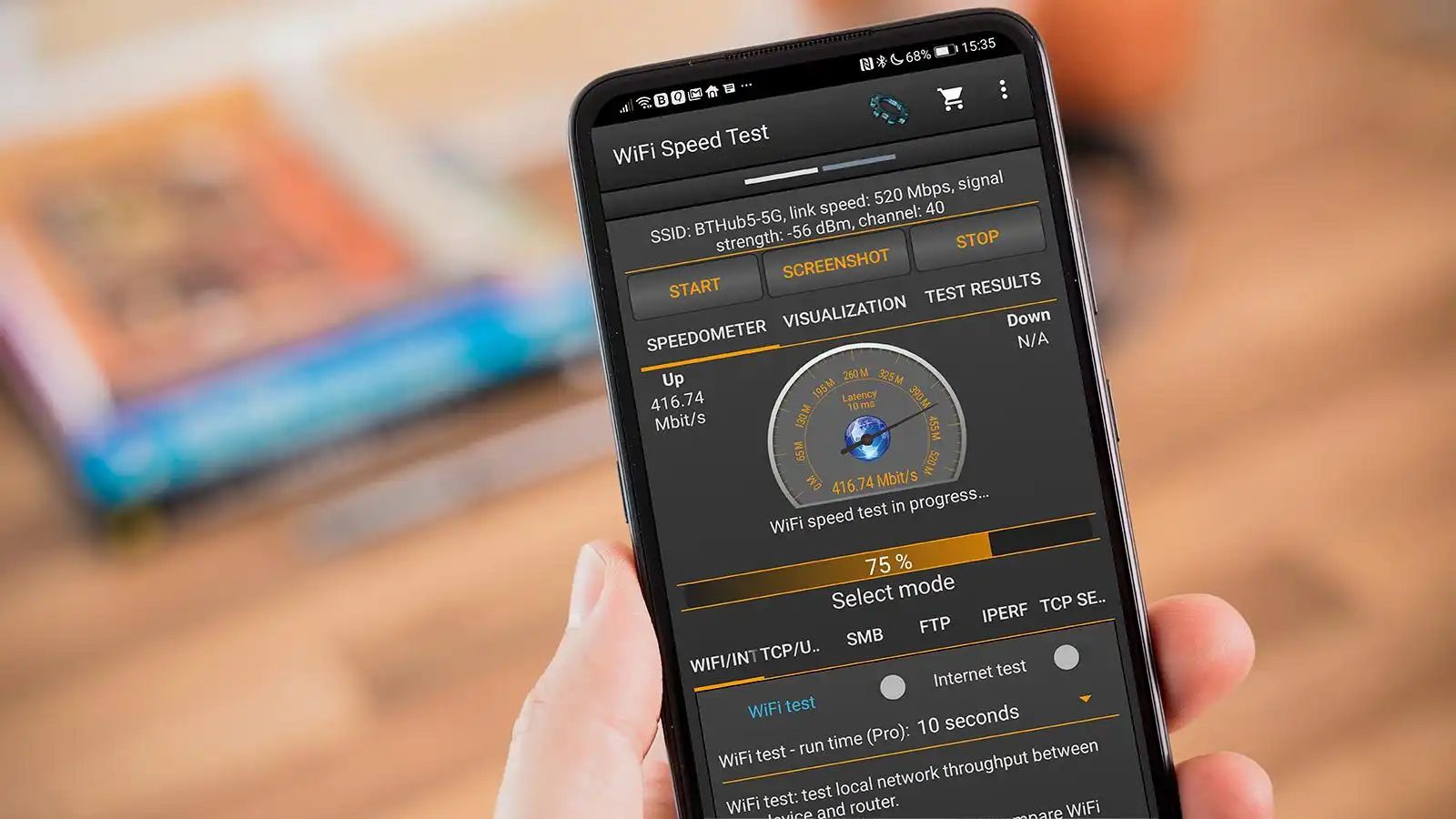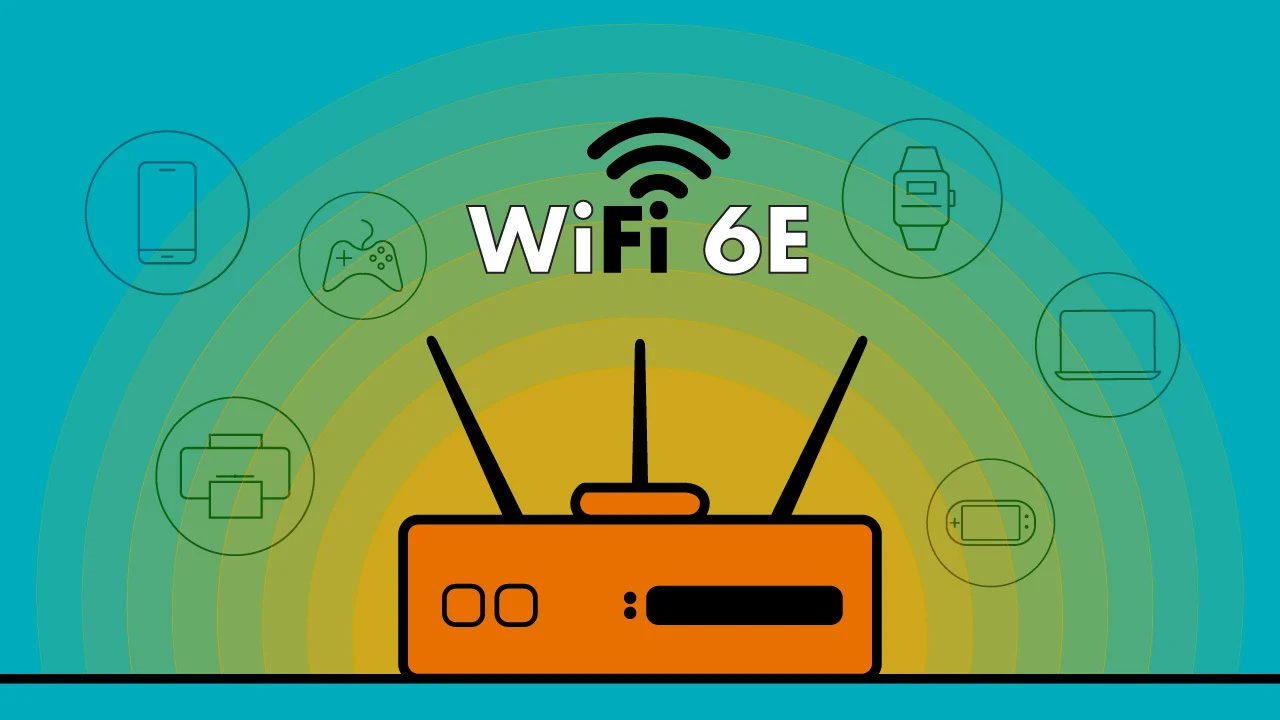Introduction
Welcome to the world of WiFi! In this digital age, having a stable and reliable WiFi connection has become essential for both work and leisure. Whether you’re streaming your favorite shows, working from home, or connecting with friends and family, a strong WiFi signal can make all the difference.
But how exactly does WiFi work? And how can you set up your own WiFi network for seamless connectivity? In this article, we will guide you through the process of making WiFi from scratch. From understanding the technology behind WiFi to choosing the right router and troubleshooting common issues, we’ve got you covered.
WiFi, short for Wireless Fidelity, is a wireless networking technology that allows devices to connect to the internet without the need for traditional wired connections. It uses radio waves to transmit and receive data between the router and connected devices such as smartphones, laptops, and smart home devices.
When it comes to choosing the right WiFi router, there are several factors to consider. The router acts as the central hub of your WiFi network, so it’s crucial to select one that can provide sufficient coverage and speed for your needs. Factors such as the size of your home or office space, the number of devices that will be connected, and the internet speed you desire should all be taken into account.
Once you have chosen the right router, the next step is setting up your WiFi network. This involves connecting the router to your modem, configuring the network settings, and creating a unique network name (SSID) and password. Setting up a strong password is essential for securing your WiFi network and preventing unauthorized access.
Security is a significant aspect of WiFi networks, as they are susceptible to threats from hackers and intruders. We will discuss various methods to secure your WiFi network, such as enabling encryption, changing default passwords, and implementing MAC address filtering.
Even with the best setup, WiFi issues can occur from time to time. We will address common troubleshooting steps to help you diagnose and resolve connectivity problems. From checking your router’s firmware to adjusting the placement of your devices, these troubleshooting techniques will aid in restoring your WiFi signal.
In situations where the WiFi signal doesn’t reach all areas of your home or office, we will provide solutions for extending the coverage. WiFi range extenders, mesh WiFi systems, and powerline adapters are some options to consider when extending the range of your WiFi network.
Lastly, we will look at ways to enhance WiFi performance, such as optimizing router settings, using WiFi analyzers, and minimizing interference from other devices. These tips will help you maximize the speed and stability of your WiFi connection.
By the end of this article, you will have a solid understanding of WiFi technology and the knowledge to set up and maintain your own WiFi network. So let’s dive in and get started on the journey to making WiFi!
Understanding WiFi Technology
Before delving into the process of setting up a WiFi network, it’s essential to have a basic understanding of how WiFi technology works. WiFi utilizes radio waves to transmit data between the router and connected devices, allowing for wireless internet access.
The heart of any WiFi network is the router, which acts as a central hub. The router connects to the internet via a wired connection, usually from an internet service provider (ISP). It then converts the incoming data into radio waves and broadcasts them wirelessly to devices within range.
Devices such as smartphones, laptops, tablets, and smart home gadgets can connect to the WiFi network by picking up the radio signals emitted by the router. These devices have WiFi receivers that can decode the radio signals into data packets, allowing users to access the internet.
WiFi operates on different frequency bands, namely 2.4 GHz and 5 GHz. The 2.4 GHz band has a longer range but lower speeds, making it suitable for activities like web browsing and email. On the other hand, the 5 GHz band offers faster speeds and is ideal for streaming high-definition videos and online gaming. Many modern routers support both frequency bands, allowing devices to connect to the most suitable one.
To facilitate the exchange of data between the router and devices, WiFi uses a set of protocols known as the IEEE 802.11 standard. The most common protocols in use today are 802.11ac (also known as WiFi 5) and 802.11ax (WiFi 6). These standards define the rules and specifications for wireless communication, ensuring compatibility and optimal performance.
WiFi networks can be secured using different encryption methods, such as WEP (Wired Equivalent Privacy), WPA (WiFi Protected Access), and the latest standard, WPA2 or WPA3. Encryption ensures that the data transmitted over the WiFi network remains private and secure, protecting it from unauthorized access. It is important to enable encryption and choose a strong password for your WiFi network to prevent unauthorized usage.
Interference can sometimes degrade the performance of a WiFi network. Interference can occur due to various factors, including other WiFi networks in the vicinity, electronic devices, and physical obstacles. To mitigate interference, it is recommended to select a clear WiFi channel and position the router away from other electronics or obstructions.
Understanding the basics of WiFi technology will empower you to make informed decisions when setting up and configuring your WiFi network. In the next sections, we will explore the steps involved in choosing the right router, setting up a WiFi network, and ensuring its security.
Choosing the Right WiFi Router
When it comes to setting up a WiFi network, one of the most crucial decisions you’ll make is choosing the right WiFi router. The router serves as the central hub that connects your devices to the internet and dictates the speed and coverage of your WiFi network. Here are some factors to consider when selecting a WiFi router:
- Coverage: The range of your WiFi network depends on the router’s coverage. Consider the size of your home or office space and ensure that the router can provide reliable coverage to all areas. If you have a large space or multiple floors, a router with strong signal range or mesh WiFi system may be a better option.
- Speed: The speed of your WiFi network depends on the router’s capabilities. Look for routers that support the latest WiFi standards, such as 802.11ac or 802.11ax, for faster data transfer rates. Additionally, routers with multiple antennas and support for dual-band or tri-band frequencies can provide better speed and performance.
- Number of devices: Consider the number of devices that will be connected to your WiFi network. If you have many devices, such as smartphones, tablets, laptops, gaming consoles, and smart home devices, opt for a router that can handle simultaneous connections without sacrificing performance.
- Internet plan: Your internet plan plays a role in determining the router you need. If you have a high-speed internet plan, ensure that the router can support those speeds. Conversely, if you have a slower internet plan, there may not be a need for a high-end router that supports gigabit speeds.
- Additional features: Some routers come with additional features, such as parental controls, guest networks, USB ports for sharing files or printers, and Quality of Service (QoS) settings for prioritizing certain types of internet traffic. Consider whether these features are important for your specific needs.
- Budget: Last but not least, consider your budget. Routers come in a wide price range, so it’s important to find a balance between your requirements and affordability. While higher-end routers may offer advanced features and better performance, there are also budget-friendly options that can meet the needs of most users.
Research different router models, read reviews, and compare specifications to find the best fit for your WiFi network. It’s also worth consulting with your internet service provider (ISP) for recommendations, as they may have specific router requirements or compatibility considerations.
By taking the time to choose the right WiFi router, you can ensure a smooth and reliable WiFi experience for all your connected devices. Once you have selected your router, it’s time to move on to the next step: setting up your WiFi network.
Setting Up a WiFi Network
Now that you have chosen the right WiFi router, it’s time to set up your WiFi network. Follow these steps to get your network up and running:
- Connect the router: Start by disconnecting your modem from the power source and connecting it to the WAN or Internet port on your router using an Ethernet cable. Then, connect your router to a power source and turn it on.
- Access the router settings: Using a computer or a mobile device, connect to the router’s default WiFi network. Look for the network name (SSID) and password on the router or in the documentation provided. Open a web browser and enter the router’s IP address, usually printed on the bottom of the router or in the documentation.
- Configure the network settings: Once you access the router settings, you will be prompted to create a unique network name (SSID) and password. Choose a strong password that combines letters, numbers, and special characters. Consider enabling network encryption, typically WPA2 or WPA3, to secure your WiFi network from unauthorized access.
- Adjust advanced settings: Depending on your needs, you may want to customize additional settings. This includes adjusting the channel settings to avoid interference, setting up a guest network for visitors, enabling parental controls, or prioritizing certain types of internet traffic using Quality of Service (QoS) settings.
- Save and apply settings: Once you have configured the desired settings, save and apply the changes. The router will restart, and your network will be ready to use. At this point, your devices should be able to detect and connect to your WiFi network using the new SSID and password.
- Update firmware: It is recommended to regularly check for and install firmware updates for your router. Firmware updates often include bug fixes, performance improvements, and security enhancements, so keeping your router up to date is essential for optimal performance.
After completing these steps, you should have successfully set up your WiFi network. Test the connection by connecting various devices to ensure they can access the internet without any issues. If you encounter connectivity problems, refer to the next section on troubleshooting WiFi issues for potential solutions.
Remember to keep your WiFi password secure and avoid sharing it with unauthorized individuals. Regularly review and update your network settings to maintain a secure and efficient WiFi network.
Setting up a WiFi network may seem daunting at first, but following the steps outlined above will simplify the process. Once your WiFi network is up and running, you can enjoy seamless connectivity and the convenience of wireless internet access.
Securing Your WiFi Network
Securing your WiFi network is of utmost importance to protect your data and prevent unauthorized access. Here are some measures you can take to ensure the security of your WiFi network:
- Change default login credentials: One of the first steps in securing your WiFi network is to change the default login credentials for your router. Default usernames and passwords are widely known and can make your network more vulnerable to attacks. Choose a strong and unique username and password combination to strengthen the security of your router’s control panel.
- Enable encryption: Encryption adds a layer of security to your WiFi network. Enable encryption using the latest standard, preferably WPA2 or WPA3, to encrypt the data transmitted between your router and connected devices. This ensures that even if someone intercepts the WiFi signals, they won’t be able to decipher the information.
- Choose a strong WiFi password: Create a strong password for your WiFi network that includes a combination of uppercase and lowercase letters, numbers, and special characters. Avoid using easily guessable passwords, such as “password” or “12345678.” Keeping your WiFi password strong and unique significantly reduces the risk of unauthorized access.
- MAC address filtering: MAC address filtering allows you to specify which devices can connect to your WiFi network. Each device has a unique MAC address, and by configuring your router to only allow trusted MAC addresses, you can prevent unauthorized devices from accessing your network.
- Disable remote management: Some routers have a feature that allows remote management, which enables you to access and manage your router settings from outside your home network. However, this also presents a security risk. It is recommended to disable remote management unless you have a specific need for it.
- Regularly update firmware: Manufacturers release firmware updates for routers to address security vulnerabilities and improve performance. Stay up to date with these updates by regularly checking the manufacturer’s website or router settings. Keeping your router’s firmware updated is essential to maintain a secure network.
- Disable WPS: While convenient, the Wi-Fi Protected Setup (WPS) feature can have security implications. It is recommended to disable WPS, as it has been found to have vulnerabilities that can be exploited by attackers to gain unauthorized access to your network.
- Guest network: If you have visitors who require access to your WiFi network, consider setting up a guest network. Guest networks provide a separate network that is isolated from your primary network, ensuring that guests can connect to the internet without having access to your personal devices or files.
Implementing these security measures will significantly reduce the chances of unauthorized access to your WiFi network. By taking proactive steps to secure your network, you can enjoy peace of mind knowing that your data and privacy are protected.
Troubleshooting WiFi Issues
WiFi connectivity issues can be frustrating, but most problems can be resolved with some troubleshooting techniques. Here are some common WiFi issues and steps to resolve them:
- Check router placement: Start by ensuring that your router is placed in a central location, away from physical obstructions such as walls, furniture, and appliances. Physical obstacles can weaken the WiFi signal, resulting in poor connectivity.
- Restart the router: Sometimes, a simple router restart can resolve connectivity issues. Power off the router, wait for a few seconds, and then power it back on. This can help refresh the router’s settings and establish a stable connection.
- Update router firmware: Check if there are any firmware updates available for your router. Outdated firmware can cause performance issues and may have compatibility problems. Visit the manufacturer’s website to download and install the latest firmware version for your router.
- Reset network settings on devices: If some devices are experiencing connectivity issues, try resetting the network settings on those devices. This can help clear any conflicting network configurations and establish a fresh connection to the WiFi network.
- Adjust WiFi channel: If you live in an area with multiple WiFi networks, interference may be affecting your WiFi signal. Access your router’s settings and try switching to a less congested WiFi channel to minimize interference and improve connectivity.
- Check for bandwidth-heavy devices: Bandwidth-intensive devices such as gaming consoles or streaming devices can put a strain on your WiFi network. Limit the number of connected devices or prioritize certain devices using Quality of Service (QoS) settings in your router’s configuration.
- Update device drivers: Outdated network drivers on your devices can cause connectivity problems. Check for driver updates on the manufacturer’s website or use a driver update software to ensure that your network drivers are up to date.
- Hardware issues: In some cases, WiFi connectivity issues may be due to faulty hardware. If none of the above steps resolve the problem, consider contacting your router’s manufacturer for assistance or consider replacing the router if it is an older model.
By following these troubleshooting steps, you can often diagnose and resolve common WiFi issues. If the problem persists, it may be worth contacting your internet service provider or seeking professional assistance to identify the underlying cause and find a solution.
Remember that consistent maintenance and periodic troubleshooting can help keep your WiFi network running smoothly, ensuring a stable and reliable internet connection for all your devices.
Extending WiFi Coverage
Having a strong and reliable WiFi signal throughout your home or office is essential for seamless connectivity. If you are experiencing weak WiFi coverage in certain areas, there are several methods you can use to extend the range of your WiFi network:
- WiFi Range Extenders: A WiFi range extender, also known as a WiFi repeater or booster, is a device that amplifies and rebroadcasts the existing WiFi signal. By placing a range extender within range of your router, it can extend the coverage to areas where the WiFi signal is weak.
- Mesh WiFi Systems: Mesh WiFi systems consist of multiple devices called nodes that work together to provide seamless WiFi coverage throughout your home or office. Each node acts as a WiFi access point, creating a network that blankets the entire space with strong WiFi signal. Mesh systems are particularly effective in larger homes or spaces with multiple floors.
- Powerline Adapters: Powerline adapters utilize your home’s existing electrical wiring to transmit the internet signal. You simply plug one adapter into a power outlet near your router and connect it to the router using an Ethernet cable. Then, plug another adapter into a power outlet in the area where you need WiFi coverage and connect your device using another Ethernet cable or the WiFi functionality of the powerline adapter.
- Router Placement: Sometimes, simply repositioning your router can improve WiFi coverage. Experiment with different locations and orientations for your router, ensuring it is placed in a central area and away from obstructing objects.
- Upgrade Your Router: If you have an older router, upgrading to a newer model that supports the latest WiFi standards can improve both coverage and speed. Newer routers often have improved antenna technology and advanced features that enhance WiFi signal strength and range.
- Optimize Router Settings: Adjusting certain settings on your router can also help extend WiFi coverage. This may include enabling features like beamforming, which focuses WiFi signal towards connected devices, or adjusting transmit power to maximize coverage without causing interference.
When extending your WiFi coverage, it is essential to ensure that the extended network maintains the same security standards as your primary network. Use the same network name (SSID) and security settings to create a seamless and secure WiFi experience for all your devices.
By employing these methods, you can extend WiFi coverage to areas that were previously out of range, providing a strong and consistent WiFi signal throughout your home or office.
Enhancing WiFi Performance
To ensure optimal WiFi performance and a seamless internet experience, there are several steps you can take to enhance the performance of your WiFi network:
- Optimize Router Placement: Place your router in a central location to maximize coverage. Ensure that it is elevated and positioned away from walls, obstructions, and sources of interference, such as electronic devices and appliances. This helps to minimize signal interference and improve overall WiFi performance.
- Update Router Firmware: Regularly check for firmware updates from your router manufacturer and install any available updates. Firmware updates often include bug fixes, performance improvements, and security enhancements that can improve WiFi performance and address any known issues.
- Adjust Channel Settings: WiFi signals can overlap and interfere with each other, especially in areas with many neighboring networks. By manually selecting a less congested WiFi channel in your router settings, you can reduce interference and improve WiFi performance. Use WiFi analyzers or apps to identify the least crowded WiFi channels in your area.
- Use Quality of Service (QoS) Settings: Enable QoS settings on your router to prioritize specific types of internet traffic. This can ensure that bandwidth-intensive activities, such as streaming or online gaming, are given priority over less demanding tasks, resulting in a smoother internet experience for time-sensitive activities.
- Upgrade Your WiFi Adapter: If you are using an older wireless device with outdated WiFi technology, upgrading to a newer device or USB WiFi adapter with the latest WiFi standards (such as 802.11ac or 802.11ax) can improve WiFi performance and support faster speeds.
- Reduce Interference: Other wireless devices and appliances, such as cordless phones, baby monitors, and microwave ovens, can interfere with WiFi signals. Keep these devices away from your router, or consider using devices that operate on different frequency bands to minimize interference.
- Optimize Bandwidth Usage: Limit bandwidth-consuming activities, such as large downloads or uploads, during peak times or when you require high-speed internet for other devices. This can prevent network congestion and ensure smoother WiFi performance for all connected devices.
- Secure Your Network: Implement strong security measures, such as enabling WPA2 or WPA3 encryption and using strong passwords, to prevent unauthorized access to your WiFi network. Unauthorized users can cause disruptions and affect WiFi performance.
- Regularly Reboot Devices: Occasionally reboot your router and connected devices to clear any temporary issues or memory leaks that may affect WiFi performance. A simple reboot can often provide a quick fix to connectivity or performance problems.
By implementing these strategies, you can optimize WiFi performance and enjoy a faster, more reliable internet connection throughout your home or office. Remember, ongoing maintenance and periodic optimization are key to ensuring consistent WiFi performance over time.
Conclusion
In this comprehensive guide, we have explored the world of WiFi and provided you with the knowledge and tools to create a stable and efficient WiFi network. By understanding WiFi technology, choosing the right router, setting up your network, and implementing security measures, you can enjoy seamless connectivity and a reliable internet experience.
WiFi has become an essential part of our daily lives, connecting us to the vast world of information and entertainment. With the right equipment and configurations, you can create a WiFi network that offers expansive coverage and fast speeds, accommodating a multitude of devices and activities.
We have discussed troubleshooting techniques to diagnose and resolve common WiFi issues, ensuring that you can tackle connectivity problems with confidence. Additionally, we explored methods for extending WiFi coverage and enhancing WiFi performance, enabling you to optimize your network to suit your specific needs.
Remember to regularly update your router firmware, secure your network with strong passwords, and adjust settings as needed to maintain a secure and efficient WiFi network. It is crucial to adapt and optimize your WiFi network as technology evolves and your needs change.
By following the advice and techniques outlined in this guide, you can create a WiFi network that elevates your digital experience, whether you’re working, streaming, gaming, or simply staying connected with friends and family.
So, dive in and put your newfound knowledge into action as you embark on the journey to create and optimize your own WiFi network. Enjoy seamless connectivity and the freedom to explore the online world to its fullest!







